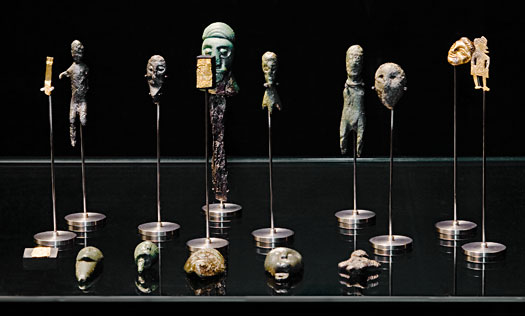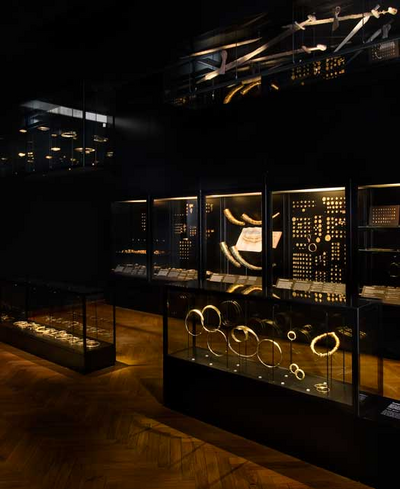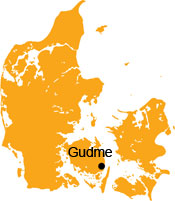Gudme – gold, gods and people
Between the 3rd and 7th centuries AD one of Denmark’s largest and wealthiest Iron Age settlements was located at Gudme on southeast Funen. The settlement consisted of a magnate’s farm surrounded by nearly 50 smaller farms. Some distance from here the settlement’s dead were buried and on the coast at Lundeborg lay an associated trading place. In all around 500 people lived at the settlement. Several religious place names suggest that Gudme (“home of the gods”) also was a centre for a heathen cult. It is implied by names like Galdbjerg and Albjerg, which mean respectively “the sacrificial mountain” and “the sacred mountain”.

The place had a special status in the society of the period. This is reflected by the many gold and silver treasures, which have appeared over the years in fields and bogs of the Gudme area. The magnate at Gudme was a prince or perhaps even a king of a large area. He probably built up his prosperity and power by levying taxes upon the farms located at the rich settlement and the trading place at Lundeborg. Thus at Gudme we see for the first time evidence of the power structure, which came to characterize the societies of the Iron Age and Viking periods.


